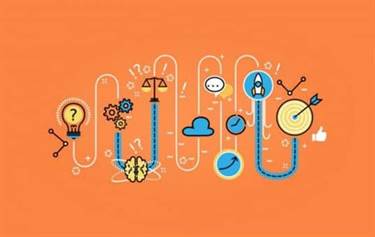You outline the work, in addition to key milestones, deliverables and objectives. As a outcome, you will establish your self as a frontrunner of a staff rooted in transparency and belief whilst you talk clear expectations and staff principles. When your group learns extra context about what’s required of them in this stage, they’re going to feel more assured. Remove obstacles by coordinating tightly with adjoining and upstream teams. Validate your assumptions about what your prospects need, then proactively resolve what you’re not doing proper now so that you don’t get distracted.

In this guide, we’ll not solely discover the levels of staff development but in addition explore how one can move your staff by way of them productively with sensible ideas, actions, and exercises. This model is a powerful device that can allow you to understand the stages of staff development, the challenges that teams face, and the strategies that can be used to overcome those challenges. This model is a basic within the field of group dynamics and is widely used by managers, group leaders, and human resources professionals to grasp and improve staff efficiency. The particular person strengths each member brings establishes a way of teamwork, as all people plays an element.
Stage 1: Forming Stage
Draw a easy four-stage diagram and ask every individual to place a dot or sticky observe next to the stage they suppose the staff is at. Focus on constructing a shared understanding throughout your group and with stakeholders. Recently, several groups in our engineering department undertook an enormous, ludicrously complex, business-critical infrastructure project. The variety of risks and dependencies despatched these established and cohesive dev teams right into a flurry of (ultimately, unproductive and/or counter-productive) exercise. If your team has ever thrashed about like this, then you understand what “storming” is. In the past, we would look to HR or our boss’ boss for steering.

In digital groups, the need for activities to help teams get to know one another is even greater, as a number of the traditional spaces for mingling and forming bonds are unlikely to be unavailable to them. Let’s check out some actions designed to help groups get to know each other in the Forming Stage. The most common is that teams go through a series of various levels earlier than effectiveness is achieved. Here’s the factor, the line between certain phases can get blurred since team members evolve at completely different instances. How they trust one another to remain accountable for their duties without dropping the ball.
Indicators And Inquiries To Look Out For Within The Norming Stage
Brian Peterson discusses how he creates empowered groups by establishing a shared vision across groups, organizations, and the corporate. Adjourning is characterized by a winding down of project activities and the release of team members back into their respective functional areas or onto new projects. This phase may https://www.globalcloudteam.com/ be full of mixed feelings — satisfaction at having successfully accomplished the project, disappointment at parting methods with staff members, or nervousness about what lies forward. After navigating by way of initial forming, intensive storming, and rebuilding during norming, magic occurs.
To correctly and clearly identify these in group kind, we use the 4 levels of team improvement. The staff improvement cycle starts over more often than you would possibly assume. It simply signifies that when change occurs, people need time to adapt. The most commonly used framework for a staff’s stages of improvement was developed in the mid-1960s by Bruce W. Tuckman. Although many authors have written variations and enhancements to Tuckman’s work, his descriptions of Forming, Storming, Norming and Performing present a helpful framework for looking at your individual group. LogRocket identifies friction factors within the person expertise so you can also make knowledgeable decisions about product and design modifications that must happen to hit your goals.
Its five-stage method provides a comprehensive understanding of group dynamics from inception to conclusion. In truth, transferring from Norming to Performing usually involves additional refinement and reappraisal of working strategies as your group grows and develops. Even on a limited-time project, taking time to analyze group effectiveness and working habits through the project is necessary in ensuring you’ll find a way to maintain productivity and course-correct the place necessary.
- Seeing your colleagues as greater than their job roles is one thing that ought to happen within the early stages of the Forming course of however it’s important to maintain partaking these muscles.
- The transition from storming to norming doesn’t happen overnight.
- Pose lots of questions to your staff, even when you assume you know the reply.
- This is the place groups start to settle into a working pattern, respect one another’s strengths and become more practical as a group.
- Have you ever puzzled why it takes a while for a brand new group to hit peak performance?
In the initial weeks, staff members start to familiarize themselves with each other. They try to know their roles, the objectives they’re aiming for, and the method to function cohesively as a team. Moving from Storing to Norming probably means many problems or difficulties may have been surfaced and resolved. This doesn’t mean your staff won’t see extra challenges or that there won’t be opportunities to improve. Effective managers will often take the opportunity to help individuals get to know one another in a protected surroundings and share themselves meaningfully.
This train is an efficient method of clarifying how your team should work together while also setting clear expectations around personal duty, reporting, and individual motion. Used alongside exercises that assist make clear team purpose and culture, this activity can ensure everybody in your team is positioned for achievement. All teams are composed of individuals with completely different needs, communication styles, and working practices. When bringing these people together and fascinating in staff growth, leaders will want to find methods to assist everybody work collectively effectively and grow as individuals and as a group. A robust staff leader is the spine of each high-performing staff.
High-performing Groups
By documenting the individual and group responses, you possibly can start to chart how attitudes have changed and improved and thus perceive how you are capable of do so once more in the future. In this stage, staff members are in the process of studying tips on how to work together. As team members start collaborating, conflicts may arise, whether that’s from clashing personalities or opinions on how a project ought to progress.
In its preliminary phases, a new team operates with common effectivity. As it begins working on difficult duties and conflicts arise, there’s usually a dip in effectiveness. Therefore, anticipating a newly fashioned staff to tackle significant challenges efficiently may be unrealistic. The primary function of this exercise is to remind and reflect on what group members or individuals have been by way of and to create a collective experience and shared story.

Boost motivation by helping your staff perceive why their work issues. In this free ebook, learn to create a shared sense of objective in your group. Every group has totally different wants in relation to their improvement.
Having a staff with already existing collaborative abilities might help resolve conflicts more easily and sooner. Having a method to determine and understand causes for modifications in the staff behaviors might four stages of team development help the staff maximize its course of and its productivity. When forming a team, leaders have to build belief, set expectations and encourage involvement. You wish to develop a keen sense of belonging in each member.

Creating a group charter is a superb software to assist your group, as is conducting completely different sorts of « get to know you » actions. Many of us must manage a group sooner or later in our lives. When that point comes it’d allow you to to know that all teams undergo a series of sequential phases as they grow towards sustained ranges of excessive efficiency and synergy.
Continue To Construct Staff Spirit (yes, Again)
It’s upon reaching this stage that a team can turn out to be high performing. Members will generally be excited about their work and find satisfaction in the results. They’ll additionally trust each other and interact with a high degree of openness. Best of all, teams at this stage will largely have the flexibility to handle themselves, resolve their very own conflicts and act collectively, as a whole.

A workshop for a team to reflect on previous conflicts, and use them to generate tips for efficient conflict dealing with. The workshop makes use of the Thomas-Killman model of conflict responses to border a reflective discussion. As with any facet of teamwork, it could be easy to fall right into a sample and not contemplate the way you would possibly enhance your process until it turns into a problem. Having an agreed-upon methodology of elevating considerations and discussing them productively is a good way to ensure that your group is ready to handle such difficulties once they come up. Team communication is key in ensuring that a gaggle can move by way of the Storming stage while additionally not avoiding probably productive discussions round working practices or totally different views. 9 Dimensions is a powerful exercise designed to construct relationships and trust among staff members.
The fifth stage of group growth, also referred to as the mourning stage, is the ultimate stage a group will undergo. After a project is over or if a group is disbanded, group members who worked together will go into a small mourning period. Group members may have a hard time working with other teams as they had robust group dynamics with their earlier team. This is the stage when things start to quiet down as your team finds their groove. As they grow extra snug working together, team members are more comfortable asking for help completing a task or getting constructive feedback. Your group begins to increase their productivity at this stage as they become more acquainted with their teammates and their working styles.
